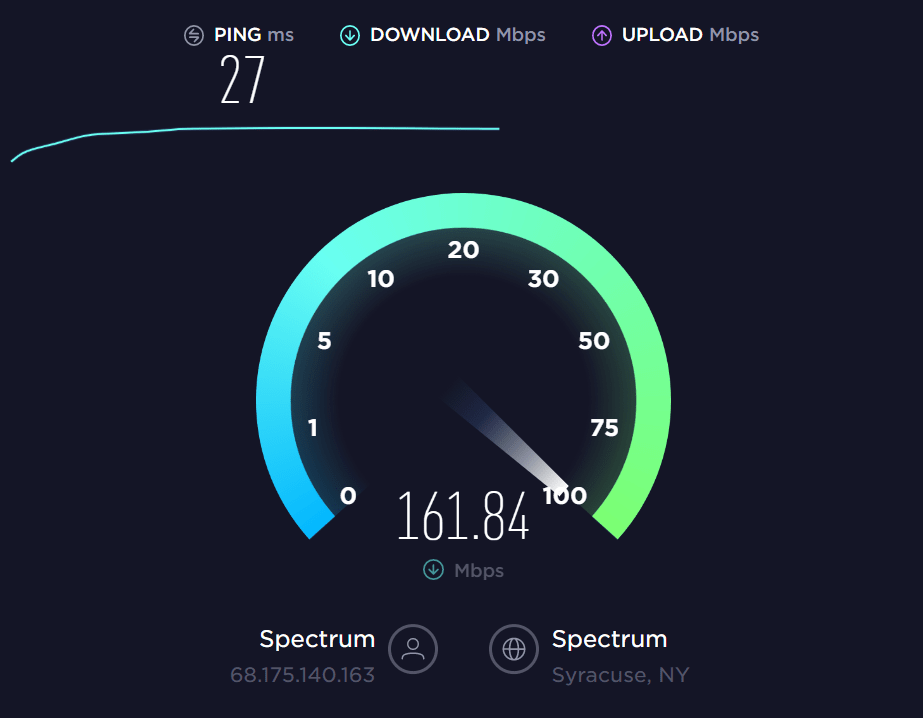In recent years, high-speed broadband has become an essential utility for most households and businesses. However, rural areas have historically struggled to receive reliable broadband services due to the lack of infrastructure and geographical challenges. Fortunately, the introduction of Fiber to the Premises (FTTP) broadband is transforming the way rural communities access and utilize the internet. For more information on the subject please get in touch with UpByte here.
In this blog post, we will explore the ways FTTP broadband is revolutionizing rural connectivity.
Increased Speeds and Bandwidth
Fiber to the Premises (FTTP) broadband offers significantly faster speeds and greater bandwidth than traditional broadband connections, including Digital Subscriber Line (DSL) or Cable Modems. The reason for this is that FTTP broadband uses fibre-optic cables that can carry data at much higher speeds than copper cables, which are used in traditional broadband connections.
In traditional broadband connections, the signal is sent over copper cables from a central exchange to the home or business. As the signal travels along the copper cables, it can lose strength and become weaker, resulting in slower speeds and lower bandwidth. This is not the case with FTTP broadband, where the signal is transmitted over fibre-optic cables that can carry the signal over much greater distances without losing strength or speed.
FTTP broadband offers symmetrical upload and download speeds, which means that users can upload data at the same speed as they can download it. This is a significant advantage over traditional broadband connections, where upload speeds are typically much slower than download speeds. This increased speed and bandwidth provided by FTTP broadband means that rural communities can now access bandwidth-intensive applications, such as streaming video, video conferencing, and online gaming, without experiencing buffering or lag.
Moreover, FTTP broadband can support multiple devices and users simultaneously, without affecting the speed or performance. This is essential for households or businesses with multiple users or devices, as traditional broadband connections can struggle to support multiple users or devices simultaneously, resulting in slower speeds and degraded performance.
The increased speeds and bandwidth provided by FTTP broadband are transforming the way rural communities access and utilize the internet. With this increased connectivity, rural areas can now access a range of services, including telemedicine, e-learning, and online entertainment, that were previously unavailable due to slow and unreliable broadband connections. Get in touch with UpByte here.


Improved Reliability
FTTP broadband provides a more reliable connection than traditional broadband. The use of fibre-optic cables in FTTP broadband is less susceptible to interference and damage from environmental factors, such as storms and lightning, which can cause disruptions and outages in traditional broadband connections.
The fiber-optic cables used in FTTP broadband are also less prone to signal loss over distance, which ensures that the data signal remains strong and consistent throughout the connection. This reliability means that rural communities can rely on their FTTP broadband connection for critical applications such as telemedicine, emergency services, and online banking.
Another advantage of FTTP broadband is that it does not suffer from bandwidth degradation due to the distance from the central exchange. In traditional broadband connections, the further away a user is from the central exchange, the weaker the signal becomes, resulting in slower speeds and lower bandwidth. However, since FTTP broadband uses fibre-optic cables that carry data signals over much greater distances without losing strength, the connection remains stable and consistent, regardless of the distance from the central exchange.
FTTP broadband connections are also less susceptible to congestion during peak usage times. Traditional broadband connections can experience congestion during peak usage times, resulting in slower speeds and lower bandwidth. However, with FTTP broadband, since the data is transmitted over dedicated fibre-optic cables, there is less likelihood of congestion, ensuring that users can always access high-speed and reliable connectivity.

Overall, the improved reliability of FTTP broadband is transforming the way rural communities access and utilize the internet. With its reliable and stable connection, rural communities can access a range of essential services, including telemedicine, online banking, and emergency services. This reliability is also essential for rural businesses, ensuring that they can operate without interruption and access the global market with confidence.
Enhanced Business Opportunities
The availability of FTTP broadband is transforming the business landscape in rural areas, providing enhanced opportunities for growth and development. The increased speeds and bandwidth provided by FTTP broadband mean that rural businesses can now compete on a level playing field with businesses located in urban areas. They can now access a range of online services and cloud-based applications that were previously unavailable due to slow and unreliable broadband connections.
With FTTP broadband, rural businesses can now engage in e-commerce, marketing, and digital advertising, allowing them to expand their customer base and reach new markets beyond their immediate area. They can also access a range of online tools and resources, such as project management software, online accounting tools, and cloud-based storage solutions, that can help streamline their operations and improve productivity.
Furthermore, FTTP broadband enables rural businesses to take advantage of emerging technologies, such as the Internet of Things (IoT) and artificial intelligence (AI), to drive innovation and growth. The IoT, for example, allows businesses to connect and monitor their equipment and devices remotely, improving operational efficiency and reducing costs. AI can help businesses analyze vast amounts of data to identify trends and insights, enabling them to make more informed decisions.
FTTP broadband also offers a more reliable and secure connection, ensuring that rural businesses can operate without interruption and safeguard their data and information. This is essential for businesses that rely on online transactions, such as e-commerce or online banking, as it ensures that their data remains secure and their transactions are completed without interruption.
FTTP broadband is providing enhanced business opportunities in rural areas, allowing businesses to access a range of online services, tools, and technologies that were previously unavailable. This increased connectivity is driving innovation, growth, and development, and transforming the rural business landscape for the better.
Increased Access to Education and Healthcare Services
The availability of FTTP broadband in rural areas is providing increased access to education and healthcare services, which is transforming the way people in these communities access and utilize these critical services.
With FTTP broadband, rural communities can access e-learning platforms, online courses, and virtual classrooms, allowing them to receive education and training remotely. This is particularly important for students in rural areas who may not have access to the same educational opportunities as those in urban areas. FTTP broadband provides students with the same level of access to educational resources, enabling them to learn at their own pace and from the comfort of their own homes.


FTTP broadband is also revolutionizing healthcare services in rural areas. Telemedicine, which is the delivery of healthcare services remotely, is becoming increasingly popular in rural areas, where access to healthcare facilities is limited. With FTTP broadband, patients can receive consultations, diagnosis, and treatment from healthcare professionals remotely, without the need to travel long distances to access medical care.
The increased speeds and bandwidth provided by FTTP broadband also enable medical professionals to transmit medical data, such as X-rays and scans, quickly and easily, allowing for faster diagnosis and treatment. This is particularly important in emergency situations where time is critical.
Moreover, FTTP broadband can support remote patient monitoring, which allows healthcare professionals to monitor patients’ health remotely, ensuring that they receive the appropriate care and treatment. This technology is particularly important for elderly patients who require frequent monitoring and care but may be unable to travel to healthcare facilities.
FTTP broadband is providing increased access to education and healthcare services in rural areas, which is transforming the way people in these communities access and utilize these critical services. This increased connectivity is improving the quality of life for people in rural areas, allowing them to access essential services from the comfort of their own homes.
Boosting the Local Economy
The availability of FTTP broadband in rural areas is boosting the local economy, providing new opportunities for growth and development.
With FTTP broadband, rural businesses can now access a global market, reaching customers and clients beyond their immediate area. This increased connectivity is driving innovation and entrepreneurship, as businesses in rural areas are now able to compete on a level playing field with businesses located in urban areas. This increased competition is driving economic growth and development in rural areas, creating new jobs and increasing local prosperity.
Moreover, FTTP broadband is enabling rural businesses to expand their operations and diversify their products and services. With faster speeds and greater bandwidth, businesses can now access a range of online tools and resources, allowing them to streamline their operations and improve productivity. This increased efficiency is helping rural businesses to increase their profitability, which is driving local economic growth.
FTTP broadband is also driving investment in rural areas. With increased connectivity, rural areas are becoming more attractive to businesses and investors, as they can now access a skilled workforce and a range of essential services. This increased investment is creating new opportunities for growth and development, which is driving economic prosperity in rural areas.
Furthermore, FTTP broadband is driving tourism in rural areas. With faster speeds and greater bandwidth, tourists can now access online information about rural areas, such as local attractions, accommodations, and events, which is driving tourism in these areas. This increased tourism is creating new opportunities for businesses in rural areas, such as restaurants, hotels, and gift shops, which is driving local economic growth.
FTTP broadband is boosting the local economy in rural areas, creating new opportunities for growth and development. This increased connectivity is driving innovation, entrepreneurship, investment, and tourism, which is transforming the economic landscape of rural areas for the better.


In conclusion, FTTP broadband is revolutionizing rural connectivity by providing faster speeds, improved reliability, and enhanced business opportunities. This increased connectivity is enabling rural areas to access and utilize a range of services that were previously unavailable, including healthcare, education, and e-commerce. With its significant economic and social benefits, FTTP broadband is playing a crucial role in transforming rural communities and narrowing the digital divide. If you want more information on GTTP broadband get in touch with UpByte here.
